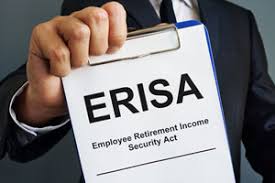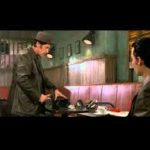Fifteen years into running my own practice, I can say without hesitation—it was the right decision. Going out on my own as an ERISA attorney allowed me to focus on what truly matters: delivering value to clients, not inflating hours to feed a law firm’s bloated overhead. I didn’t want to be another cog in the machine, pressured to bill time instead of spend time solving problems. I wanted to be a resource—not a revenue center.
One of the issues I’ve championed from the start is the importance of using an independent ERISA attorney for plan documents. Too often, plan sponsors rely on whoever is drafting the documents at their TPA or bundled provider. But here’s the thing: plan documents are legal documents. And legal documents come with legal consequences. You wouldn’t let your accountant draft your will, so why let your TPA’s in-house drafter—who might not even be a practicing attorney—build a plan document that could expose you to regulatory risk?
That’s not to say every ERISA attorney is the right ERISA attorney. Just like with TPAs and financial advisors, there are some great ones—and there are some you’d be better off avoiding. I know this firsthand. I’ve worked for TPAs. I’ve worked in law firms. And I’ve reviewed enough ERISA documents to know when something is a ticking time bomb.
One that sticks out? A plan amendment from a California ERISA attorney, intended to tweak a client’s matching formula. What landed on my desk was an incoherent monstrosity. I turned to my plan conversion expert and said, “Sure, he can write this—but good luck administering it.” That’s the danger of hiring the wrong specialist. If you’re a small business with a single-employer 401(k) plan, don’t hire an ERISA attorney who spends their days on multiemployer union plans and has never dealt with revenue sharing. It’s not the same world, and you’ll pay the price for that mismatch in the long run.
At the same time, I’ve never believed that every plan sponsor needs a $25,000 custom document. Value matters. If a TPA is offering a pre-approved document for $2,000 and it fits the plan sponsor’s needs, I’ll gladly recommend it. The key is understanding what the client needs—not pushing what pads your own bottom line.
I’ll never forget the advisor who told me about a plan sponsor whose $100,000 budget for a fiduciary review was entirely consumed by a single ERISA attorney—before the work was even finished. That’s not advocacy. That’s highway robbery.
That’s why my practice is built on flat fee billing. Plan sponsors need cost certainty. They deserve to know what they’re paying for, and they shouldn’t have to flinch every time they pick up the phone to ask their attorney a question. My disdain for the billable hour comes from years of watching it weaponized. When hours are currency, efficiency becomes the enemy. And the more important billables are to a law firm’s culture, the easier it is for overbilling and abuse to thrive.
I get why midsize firms stick to it—they’ve got overhead, associates, partners, and parking garages to pay for. But clients shouldn’t have to foot that bill. That’s why I don’t make them.
And look, as much as I’ve joked about my time working for TPAs—and yes, it’s been great material—those years were the foundation of everything I know. Nothing I learned in law school, and certainly nothing I saw in the corridors of a traditional law firm, prepared me like that TPA experience did. It was trial by fire. Drafting documents quickly. Fixing problems no textbook ever mentioned. Thinking fast, under pressure, and still producing something solid. That world taught me to be practical, to be responsive, and to embrace flat fee billing not as a gimmick, but as a reflection of how real retirement plans actually operate.
Fifteen years later, I still believe in the same things I did when I struck out on my own: that good advice should be affordable, that legal documents should be readable and administrable, and that clients shouldn’t have to choose between quality and value.
And no—I wouldn’t trade this ride for anything.







